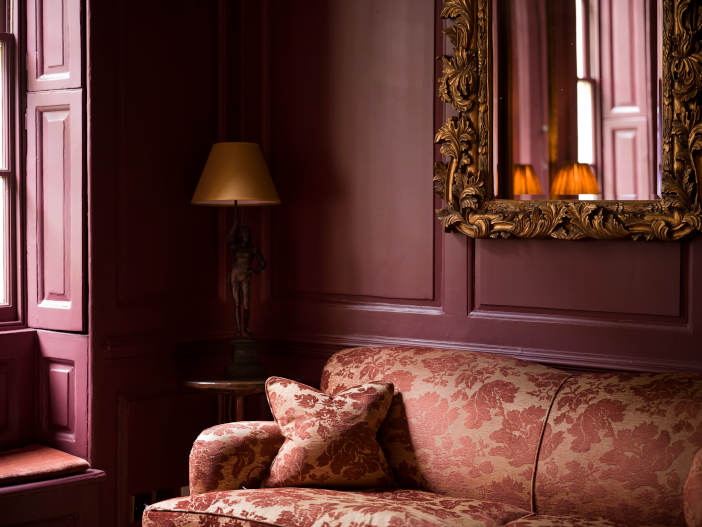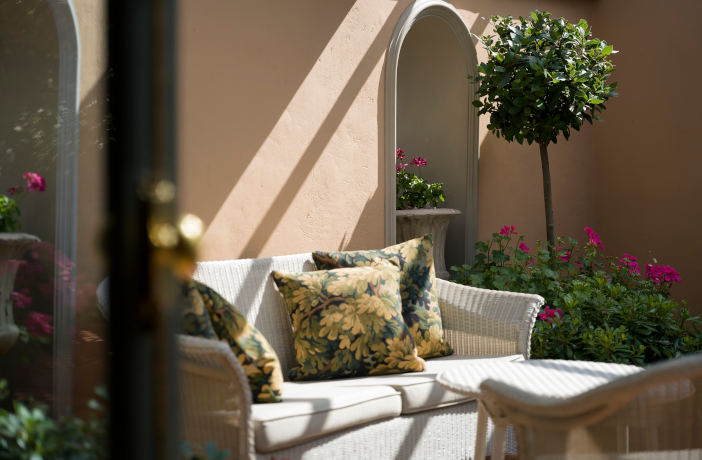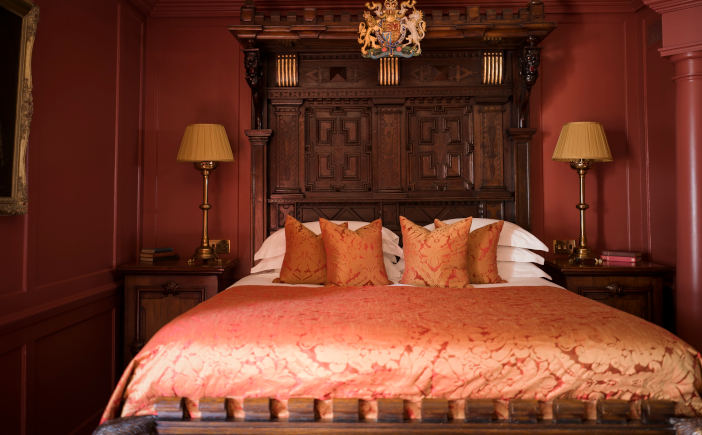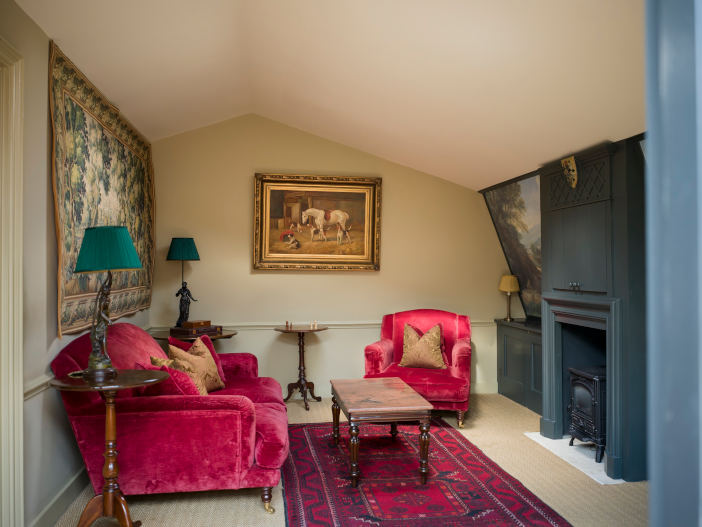Despite its elegant beauty, you could be forgiven for walking past Hazlitt’s Hotel on Frith Street in London’s Soho without paying much attention, but ‘that’s kinda the point,’ for discretion and intimacy is the ethos which owners Peter McKay and Douglas Blain hold most dear. The fact that you’re never likely to find a line of metallic supercars or paparazzi outside the hotel, nor the obsequious, top-hatted doorman, is the reason many A-listers wishing to keep a low profile, favour Hazlitt’s over many others. The forerunner to the equally charming Batty Langley’s in Spitalfields and The Rookery in Edinburgh, Hazlitt’s is a clubby central London bolthole unlike any other.

Named after the essayist William Hazlitt, who lived in the property in the 1800s, the hotel comprises four conjoined Georgian townhouses, and the moment you’re buzzed in, prepare to find yourself in an aesthetic embrace of glowing fireplaces and well-stocked bookshelves, including first editions signed by the many authors who have stayed here. J.K. Rowling, who has surely experienced a fair number of luxury hotels, is one of Hazlitt’s regular VIPs, hence the two signed 1st edition Harry Potter books you can find in the Library. Plentifully stocked honesty bars encourage residents to make themselves at home and live like a member of the aristocracy in the heady days before inheritance tax, for the hotel’s collection of over 2,000 paintings and prints lends Hazlitt’s the atmosphere of a private home or members’ club.
I fail to see how any hotel with upwards of 100 rooms can be termed ‘exclusive’ or a rival for the boutique Hazlitt’s, with its 30 individually designed rooms and suites, many with four-poster or canopied beds. Offering the discerning traveller a unique city break, the well-appointed Duke of Monmouth Suite is named after the aristocrat who was beheaded in 1685 for treason and used ‘Soho!’ as a rallying call for his men at the Battle of Sedgemoor, half a century before it was coined for this area of London. Set over two floors, the 688 sq ft apartment boasts a canopied king size bed adorned with a royal crest, a large bath area presided over by a somewhat Gothic-looking eagle whose beak doubles as a spout, and sumptuous red velvet curtains screening an elegant desk calling for you to write an elicit love letter penned on the hotel’s stationary.

Upstairs, you’ll find a spacious sitting room with a comfortable red velvet sofa and armchair, a flatscreen TV concealed behind a mirror (there’s another on the wall opposite the bed), and a double fridge mini-bar housed in a cupboard that’s well-stocked with snacks and crystal glassware. The fact that the upstairs quarters (with WC/shower room) are accessible without having to pass through the bedroom, makes the Duke of Monmouth Suite an ideal entertaining space, especially in the warmer months when you can host a small gathering on the attractive outdoor terrace with its table and chairs, red tiled floor, wall mirrors, sculpture, potted cyclamen and best of all, a sliding glass roof.
Soho never seems to change, only evolve, although it’s extraordinary to think that the area was first developed by King Henry VIII from farmland before becoming a fashionable district for the aristocracy in the late 17th century. Soho has remained one of the capital’s foremost entertainment districts ever since the boom in popularity of theatre during the Victorian era, which lent the neighbourhood a bohemian atmosphere due to the theatrical and creative circles who frequented and worked in the vicinity. No matter how many times I explore the microcosm just off busy shopping thoroughfares such as Regent and Oxford Street, I never cease to be amazed by how abruptly you enter what feels like ‘real’ London; a patchwork quilt of wonderful independent businesses, including historic cafes and restaurants.

If you agree with William Hazlitt that ‘travel’s greatest purpose is to replace an empty mind with an open one,’ you can understand London better by exploring the colourful streets of Soho and its historic network of diversity. Maison Bertaux have been renowned for creating glorious French cakes and patisserie since 1871, while the iconic Bar Italia, with its neon clock sign, continues to serve the authentic Italian coffee which has enticed everyone from local sex workers to the late David Bowie. Quo Vadis, a former brothel and one-time residence of Karl Marx, was founded by Peppino Leoni in 1926 and has long been a culinary landmark, with Jeremy Lee now reviving classic British dishes with serious panache. Or, just a hop, skip and a jump from Hazlitt’s is the French food lover’s paradise, L’Escargot, who have made it their mission to convert squeamish diners to the joy of snails since 1927. So, whilst Hazlitt’s doesn’t boast their own restaurant, a memorable dining experience is practically on the doorstep.
I’m all for room service breakfast being compulsory, and if you’re anything like me, you’ll detest hotels more or less forcing you out of bed for breakfast, usually served in a blindingly bright room reeking of sausages warmed under hot plates like an NHS staff canteen. Is anything less conducive to a pleasant hotel stay than having to exchange bleary-eyed ‘good mornings’ to over-cheerful staff who always take at least half an hour to present you with a tepid cup of coffee? One glimpse of the average hotel buffet, bearing pathetic-looking ‘freshly baked’ yet originally frozen mini croissants and pain au chocolat, ransacked by the early-risers, makes you wish you’d opted for a lie-in and the dolls-house-sized kettle – or God forbid, the Nespresso machine which appears to have replaced yesteryear’s trouser press when it comes to hotel trends.

Hazlitt’s breakfast is simple but perfect; excellent coffee, freshly squeezed orange juice and made-that-morning Brick Lane Bagels with tempting additions such as smoked salmon, presented on cheerful blue and white Burleigh Pottery. The only thing guests of the Duke of Monmouth Suite will have to concern themselves with is where to partake of this far more civilised and leisurely repast; in the majestic king-size, on the sofa, or outside on the covered terrace while the buzz of Soho, four storeys below, reaches you like the hum of so many industrious bees. Whether you’re visiting for business or pleasure, or perhaps a little of both, Hazlitt’s is sure to become your Soho-home-away-from-home.
Hazlitt’s, 6 Frith Street, Soho, London W1D 3JA. For more information please visit the website.




